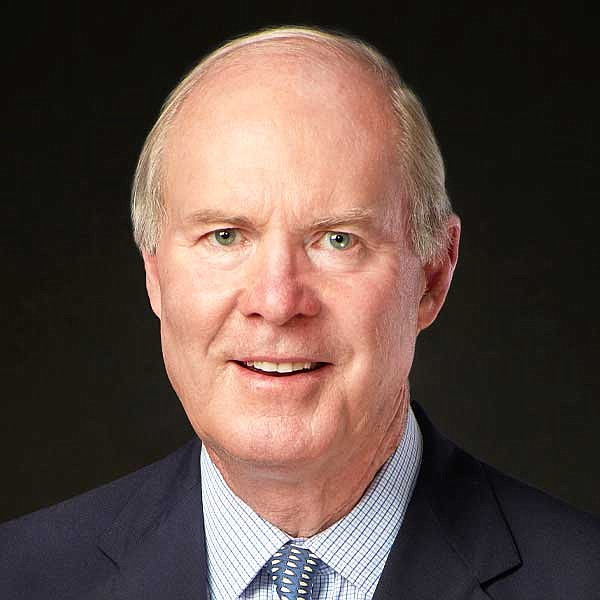
The JEA board approved construction of a $1.57 billion natural gas-fired power plant Aug. 26, opting for the utility to take on the project itself instead of an alternative plan to buy additional power from Florida Power & Light.
The city-owned utility’s seven-member board took the first step to build the plant on about 40 acres in the former St. Johns River Power Park in North Jacksonville. JEA shut down and demolished a more than 30-year-old power plant there in 2018. It was powered by coal.
JEA will next issue a request for proposals from contractors to build the facility and will work to obtain regulatory approvals for construction with a goal of bringing the plant online in late 2031 or early 2032. The vote was 6-0, with Kawanza Suarez not present because of a business commitment.
Several board members said they wrestled with the cost of the new plant, but believed it was the most efficient way for JEA to serve a growing population, increasing demand for electricity and a growing need to retire a 48-year-old gas-fired unit at JEA’s Northside Generating Station.

Under the board vote, JEA will purchase a gas turbine from GE Vernova Operations LLC, one of two respondents to a request for proposals to provide the unit. Due to high demand for turbines, JEA doesn’t expect the turbine to be delivered until at least 2027.
Increasing costs
The utility has not built a new generating facility in 14 years. In 2019, a previous iteration of the board opted against a staff recommendation to build a new oil- and gas-fired plant at an estimated $553 million. The cost rose to $800 million when JEA next estimated it in 2022.
JEA officials said inflation over the past three years increased the cost of construction, materials and equipment.

“We can’t kick the can down the road,” board Chair Joe DiSalvo said. “That can’s going to hit a wall two inches away.”
Juli Crawford, senior vice president of finance at JEA, said after the vote that the utility would need to increase rates by a yet-to-be- determined amount to cover the costs of the project. She said construction would be financed over 30 years to spread out the costs and keep rate increases to a nominal level.
JEA staff said the expense also will be offset by savings from replacing the Northside unit with the more efficient turbine. The modern unit is 40% more energy efficient than the older version, which will allow JEA to purchase less natural gas to run it.

The new unit will also produce less emissions and is capable of being powered by hydrogen should the emerging technology for operating power plants on that fuel be perfected.
According to JEA documents, the new facility would generate up to 675 megawatts of electricity, enough to power 300,000 homes. The current Northside unit produces 524 megawatts.
The new facility will require a structure and equipment, such as water pumps and pipes. Ricky Erixton, JEA chief electric systems operator, said it would require a staff of around 40 employees to operate.
JEA staff said new generation or purchased power was needed to allow the utility to meet a state-required 15% margin in reserve power it can provide through its grid.
FPL deal rejected
In selecting the self-build option, the board rejected a proposed Power Purchase Agreement (PPA) with Florida Power & Light Co. for 600 megawatts of electricity.
Board member John Baker said that while the PPA would save JEA up-front costs, it had several drawbacks. Among them, he said, power would be supplied from South Florida through lines that could be downed during major storms.

In addition, Baker said the PPA would leave JEA receiving about one-third of its power from outside sources – FPL and the Plant Vogtle nuclear facility in Georgia. JEA is under a long-term agreement to purchase power from Vogtle at about $250 million per year over the next 20 years.
“Once you get over a one-third of your power coming by wire from long distances, you’re rolling the dice in a way that does not make me comfortable,” Baker said.
Why fossil fuel?
The board’s vote came after several speakers voiced concerns about the utility investing in a fossil fuel-burning plant over solar generation.
JEA staff said that because of recent policy changes by President Trump, solar energy production is more costly than natural gas. They said other considerations for building a solar facility included that Northeast Florida’s often cloudy weather makes it a less-than-ideal environment for solar generation, while requiring large amounts of land for solar arrays.

“Whatever administration you have has an agenda,” Erixton said. “Right now, the most impactful ones are all the cuts to renewables that you’ve seen in the news. That’s making it harder for developers to develop renewable community projects and sell it to the market to compete with the existing natural gas or new generation.”
While staff recommended the gas-burning plant, it noted that JEA has invested in renewable energy and plans to continue doing so. According to JEA’s website, the utility has struck agreements that will add 200 megawatts of solar energy and 100 megawatts of battery energy to its grid by the end of 2026 toward a goal of sourcing 35% of its power from renewable sources by 2030.
DiSalvo said that although solar may eventually become cheaper than fossil fuels, JEA couldn’t afford to wait for those technologies to be perfected.
“What happens if the technology doesn’t come through with alternative sources? My personal view is the risk isn’t worth it,” he said.
JEA first considered a self-build in 2012 and again in 2019, but sluggish economic conditions and other factors pushed those plans down the road.
“These are decisions that we have to make,” board member Arthur Adams said. “There is a do-nothing option, but I can tell you, it’s not great.”
JEA CEO Vickie Cavey said the utility considered all options before landing on the St. Johns River Power Park facility.
“It was not easy. It was not easy for staff. We tried to find any and all alternatives, and we could not,” Cavey said. “And I believe, and staff believes, that this is the best alternative for JEA.”